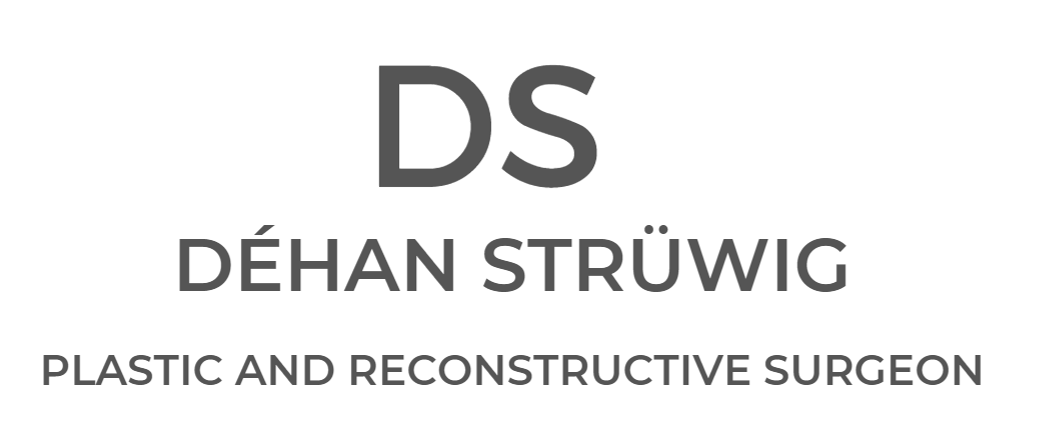Call Us - (+27) 21 531 4565
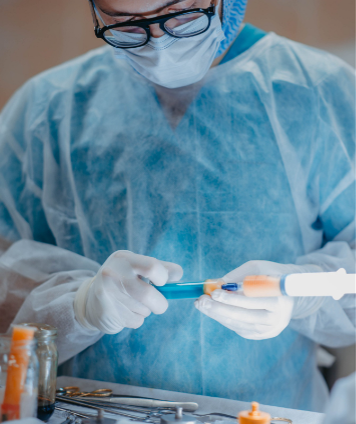
Reconstructive Surgery
We are able to offer a variety of reconstructive surgeries to assist with patients who have perhaps had cancerous or benign growths removed. Aesthetic loss can be devastating when a patient has suffered a traumatic event. In some cases birth defects can result in patients looking to achieve a more natural appearance.
Your safety is essential and will remain the primary concern in reconstructive procedures. Any reconstructive procedure will be tailored to you, considering the best aesthetic outcome and the impact the reconstruction may have on your lifestyle.
Contact us to schedule your consultation today!
Contact UsAutologous breast reconstruction
Breast reconstruction after breast cancer is performed to restore shape and form to the area where a diseased breast was removed during a mastectomy. Breast reconstruction can be done at the same surgical sitting as the breast cancer surgery or once the cancer treatment program has been completed or cancer has been correctly staged and treatment options determined.
Any reconstructive procedure will be tailored to you, considering the best aesthetic outcome and the impact the reconstruction may have on your lifestyle.
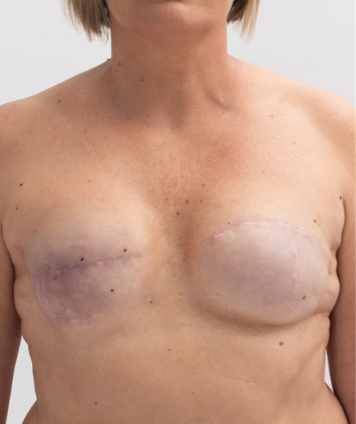
Frequently Asked Questions
How is the breast reconstructed?
In certain circumstances, the patient’s skin, fat, and muscle can be taken from one body area, like the abdomen, back, buttocks, or inner thighs, and used to create a reconstructed breast. This procedure is referred to as autologous breast reconstruction.
The quality of the breast reconstruction is influenced by the plastic surgeon’s skills, the amount of missing tissue, the patient’s health conditions, the size of the opposite breast, and cancer treatment options.
Your safety is essential and will remain the primary concern in reconstructive procedures. Any reconstructive procedure will be tailored to you, considering the best aesthetic outcome and the impact the reconstruction may have on your lifestyle.
How long lasting are the results and will I recover sensation?
Although the results last a lifetime and can feel quite natural, the newly reconstructed breast will not have the sensation of a normal breast.

Breast reconstruction with fat grafting
Using the patient’s fat to reconstruct a breast after breast cancer or to refine the results of breast reconstruction is a relatively new technique. The hard tissue resulting from radiation therapy for breast cancer is effectively softened.
This ensures that patients experience far more comfortable and aesthetically pleasing outcomes.
The dents resulting from some reconstruction procedures, including lumpectomies, deformities of shape and size, and visible, palpable breast prostheses due to thin tissue cover, can all be addressed very effectively with fat grafting.
Fat grafting can be effective where minor enhancements are needed to attain symmetry between a reconstructed breast and a healthy breast or between two reconstructed breasts.
Breast reconstruction with tissue expanders and/or breast implants
The option to place a tissue expander first, expand the skin over a period, and then replace the tissue expander with a permanent silicone breast prosthesis is one way to perform breast reconstruction.
Sometimes a breast implant can be placed immediately rather than a tissue expander.

Frequently Asked Questions
Considerations on choosing this treatment option
The quality of the breast reconstruction is influenced by the plastic surgeon’s skills and the amount of missing tissue, the patient’s health conditions, the size of the opposite breast, and cancer treatment options. In patients with multiple health problems, obesity, and older patients, reconstruction with implants, or tissue expanders with implants, might be a better option. Although numerous operations are required, these are of shorter duration.
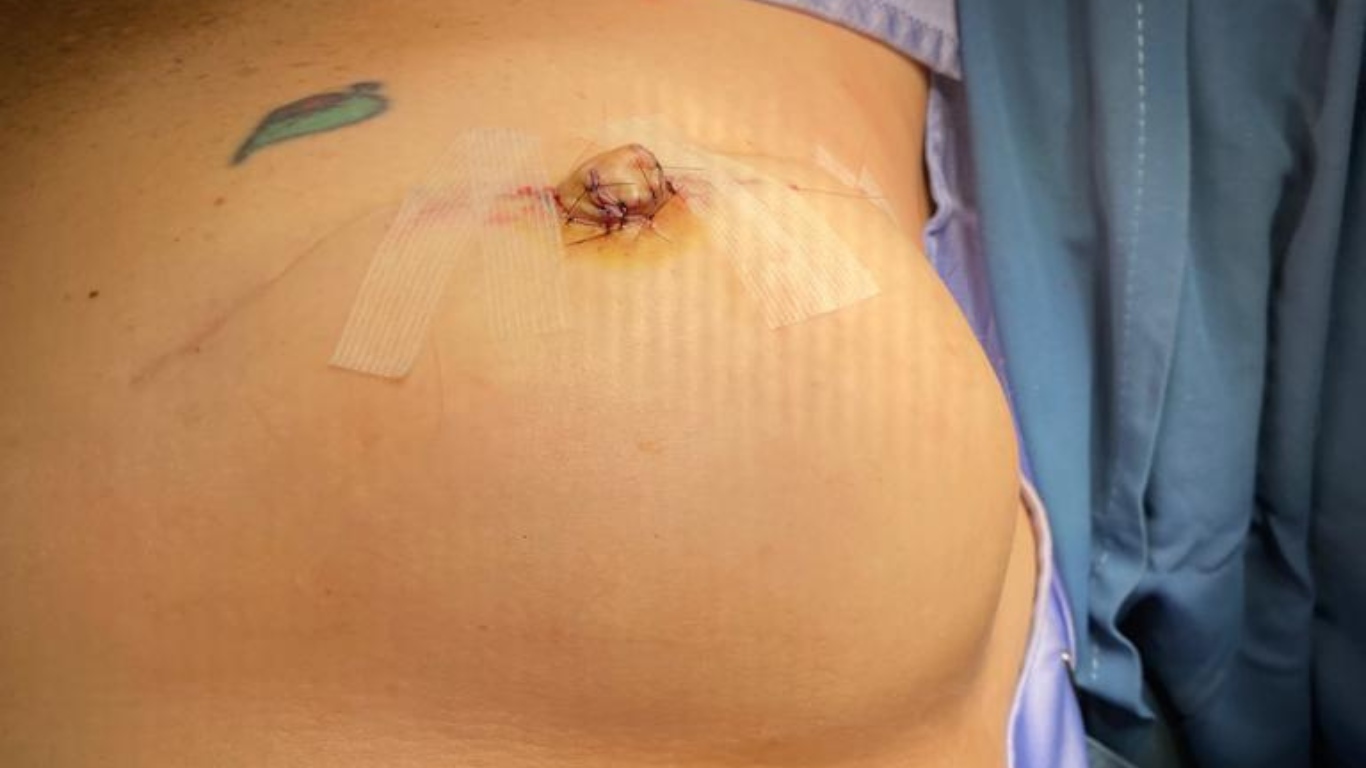
Nipple and areola reconstruction
Breast cancer might be nipple and areola-sparing, but in many cases, this beautiful component of the breast must be removed in breast cancer surgery. Nipple-areola reconstruction is often the very last step of regaining femininity and confidence on the journey of a breast cancer patient.
The ideal reconstruction offers symmetry in position, size, shape, texture, pigmentation, and permanent projection.
Frequently Asked Questions
Should I have nipple reconstruction or just 3-D tattooing?
Reconstruction of the nipple is possible, whereafter, areola tattooing can be done.
Patients might also opt to have nipple-areola tattooing rather than undergoing further surgery. Exceptional work is done by permanent tattoo artists in this regard.
Although 3-D tattooing of the nipple can present realistic results, the nipple will not have any projection. Stick-on nipples/areolas are also available but can cause frustration as the stick-on glue is not permanent.
Are there many options available?
The ideal reconstruction offers symmetry in position, size, shape, texture, pigmentation, and permanent projection. Many innovative and creative ways have been used to do this. These methods include composite nipple grafts and other local skin flaps or skin grafts. Each method has unique characteristics that apply to different breast types.
Autologous ear reconstruction
This procedure is performed when a patient is born without an external ear (microtia). It can be performed when a patient has lost a part of the outer ear.
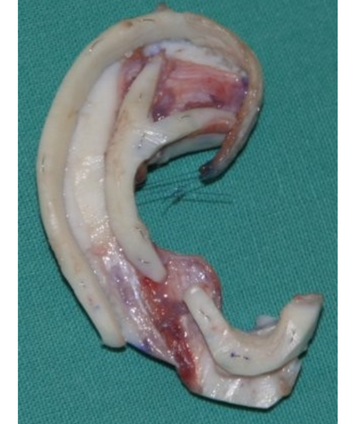
Frequently Asked Questions
What is involved in this procedure?
During this procedure, rib cartilage is harvested, an ear framework carved and assembled, and placed into a skin pocket in the correct anatomical position. During the procedure’s second stage, the ear is elevated to have the same projection as a normal ear.
The procedure is technically challenging and should only be performed by adequately trained and experienced plastic surgeons.
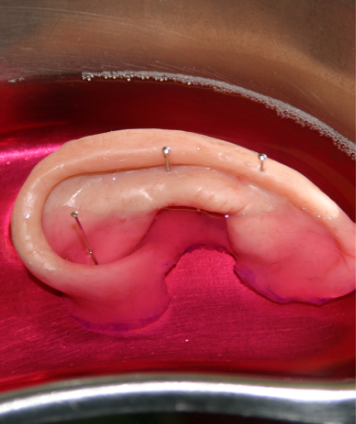
Prosthetic ear reconstruction
Aesthetic loss is devastating when a patient loses an ear due to a traumatic event or cancer or is born without an external ear (microtia).
Frequently Asked Questions
Why might you need a prosthetic ear rather than surgical reconstruction?
Surgical reconstruction utilizing autologous tissues, like rib cartilage, is not always possible due to extensive scarring in the area, as in burns or motor vehicle accidents. Prosthetic reconstruction is an established and reliable alternative technique to autologous ear reconstruction.
How is the procedure performed?
The surgical procedure is performed over two stages: titanium implants are placed in the skull in the correct anatomical position during the first stage.
During the second stage of surgery, the implants are exposed, and the final pillars onto which the ear prosthesis will be clipped are placed.
The process is complete when a skilled prosthetist/orthotist crafts the final ear prosthesis as a replica of the contralateral ear. The patient is fitted with a final prosthesis.
How realistic is the result?
I work closely with a very skilled prosthetist/orthotist. Although the prosthesis must be replaced, the result is aesthetically pleasing and highly realistic – only those with insider knowledge will realize that the patient is wearing a prosthetic ear.
Earlobe reconstruction
Earlobes have a significant aesthetic role. The repair can be challenging, as a natural appearance and durable outcome must be obtained.
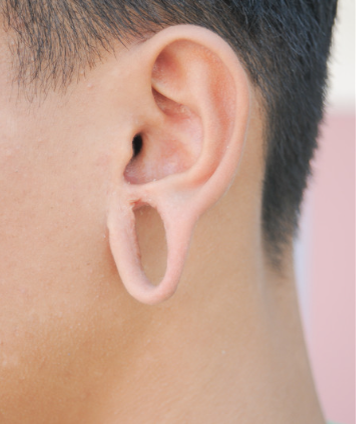
Frequently Asked Questions
Why might this surgery be needed?
Earlobes are frequently bitten off, torn, or significantly damaged during traumatic events, such as burns or motor vehicle accidents. At the same time, both cancerous and benign growths might require a significant part of the earlobe to be removed and reconstructed.
Both females and males can suffer torn and stretched earlobes from piercings or earrings. These can be reconstructed surgically in a minor procedure performed on an outpatient basis. The torn part must be repaired, but the earlobe must be rebuilt to attain an aesthetically pleasing look.
How long after surgery must one wait before piercing again?
Should a patient require further piercing, this can be performed approximately three to six months after the reconstructive surgery.
Who else might benefit from this surgery?
As patients age, earlobes stretch out, often resulting in an older-looking face. Patients with large earlobes can undergo an earlobe shortening or earlobe reduction procedure. Earlobe reduction can usually recreate a more youthful appearance.
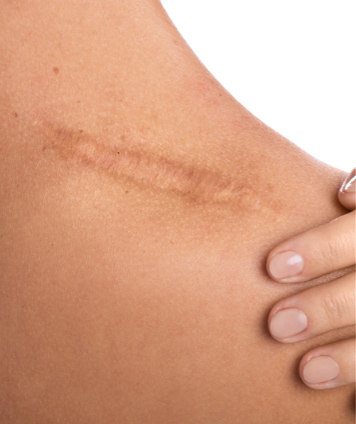
Scar revision
Any injury to the skin, whether caused by a surgeon’s scalpel or another traumatic event, will leave a scar. Often all that is required is an understanding of the process of scar modulation, which takes place over approximately two years, and patience.
Frequently Asked Questions
Is surgery my only option?
Scars can be improved surgically and non-surgically.
Can the scar be permanently removed?
Scars cannot be removed permanently. The main aim of scar revision is to minimize a scar so that it becomes less conspicuous and blends with the surrounding skin and skin tone.
